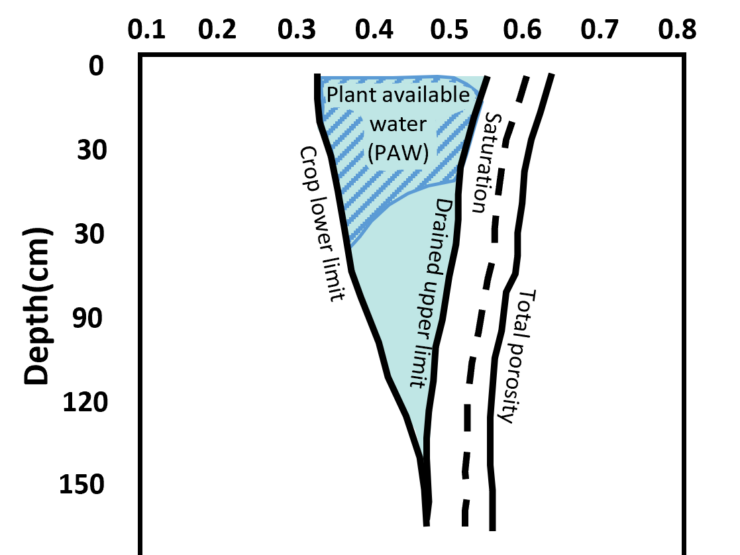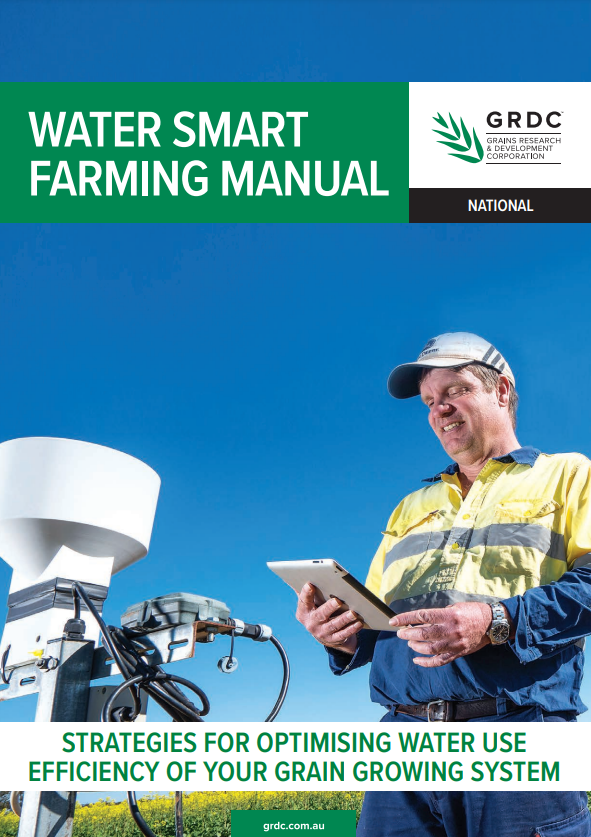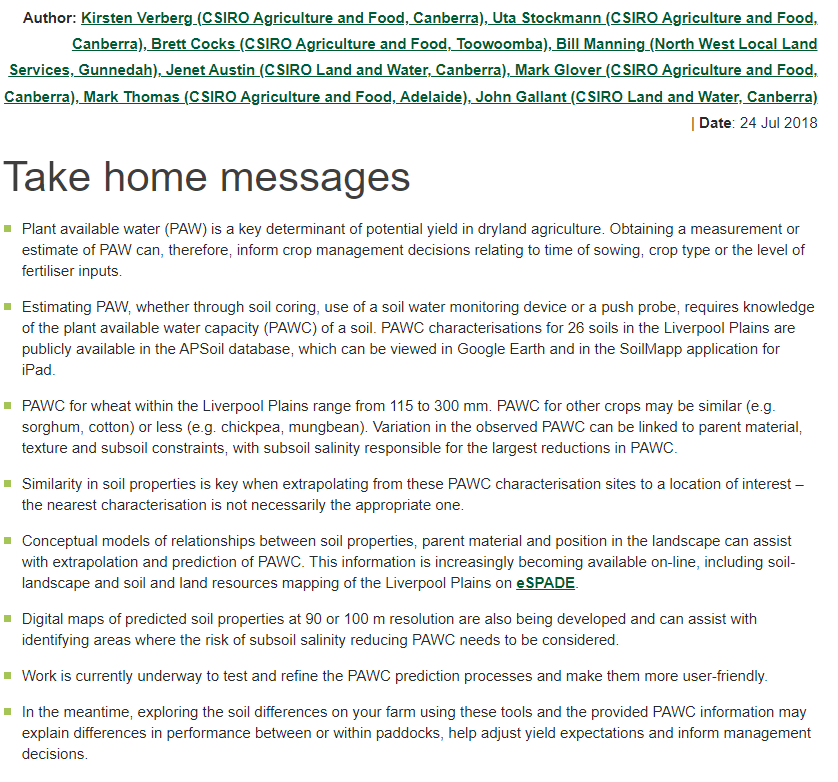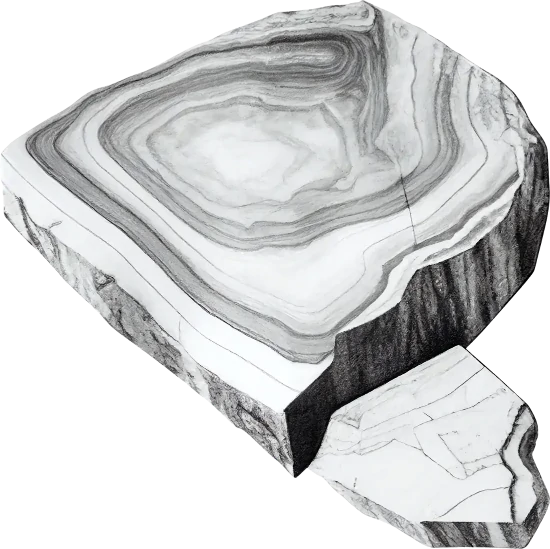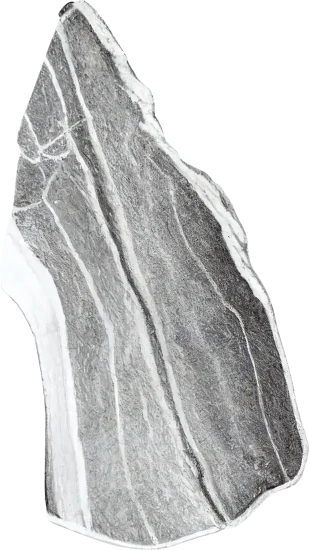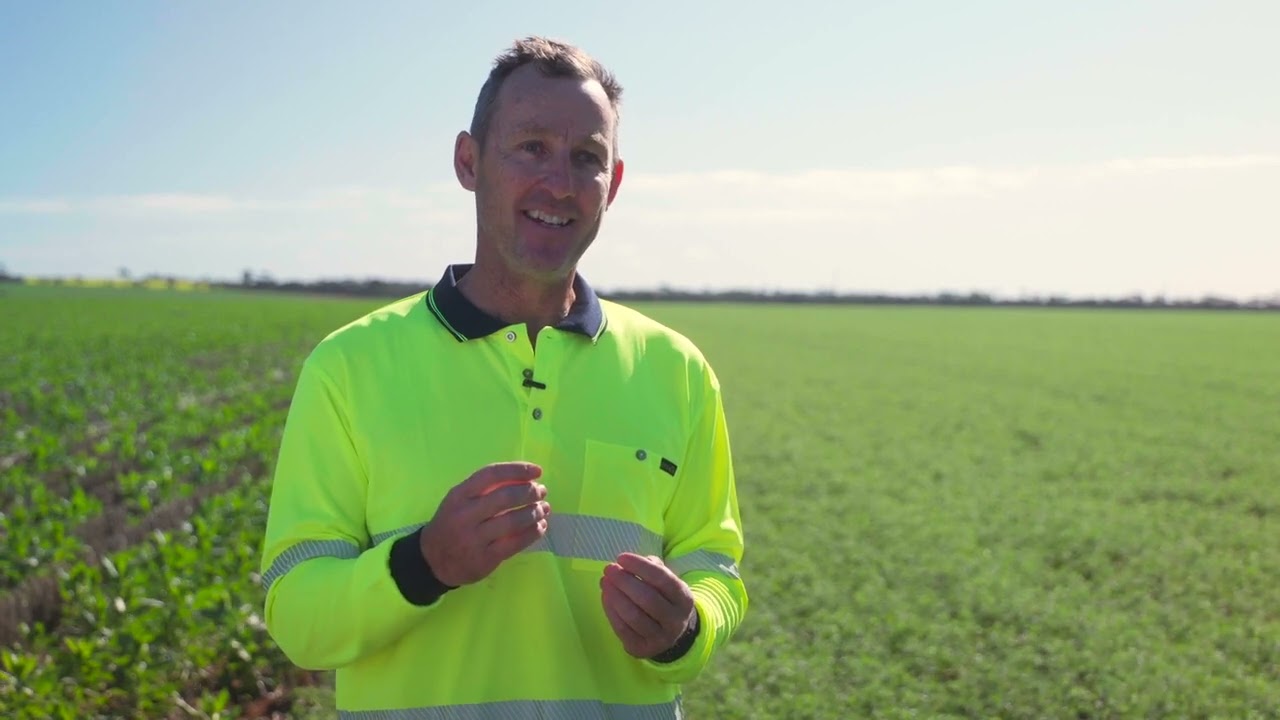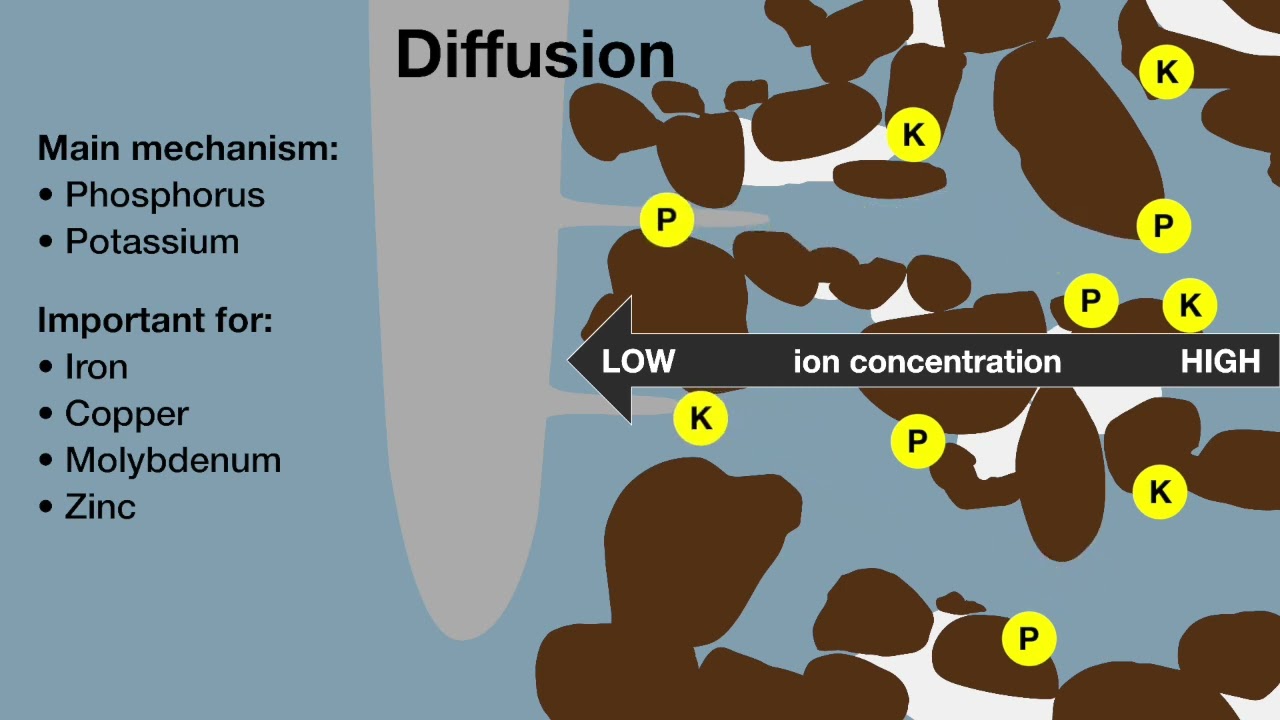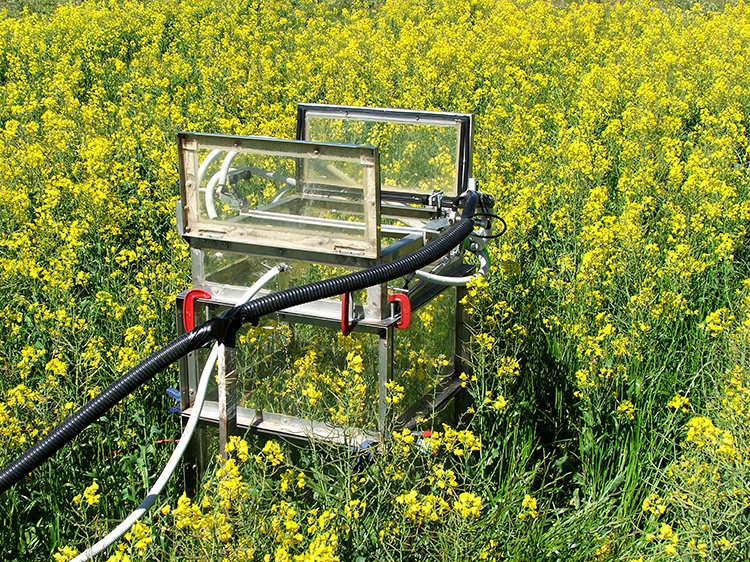Soil is made up of solid particles (clay, silt and sand), with both air and water occupying the spaces in between – rather like a sponge. The amount of water stored is the balance between water entry into and losses from the soil profile and represents the water holding capacity of the soil.
Soil permeability
Permeability refers to the ability of a soil to absorb and transmit water.
Permeability describes the ability of a soil to freely transmit water, allowing rapid entry and deep percolation of water (which may be either vertical or horizontal), and effectively represents the physical fertility of the soil.
Permeable soils allow the rapid return of oxygen to the soil following adverse soil conditions such as waterlogging, inundation (caused by flooding) or wetting (rain and/or irrigation).
Permeable soils also facilitate the upward movement of water in response to evaporation. The smaller the inner diameter of the soil pores, the greater is the measurable rise of water above the water table. Reduced tillage and increased ground cover effectively reduce the evaporation rate and thus the potential for water loss.
Water infiltration
Water infiltration is the entry of water into the soil.
Water entry or infiltration into Australian soil is adversely affected by a number of factors at the soil surface, including
- water repellence, which is associated with waxy organic residues that coat the surface of soil particles decreasing water infiltration, and
- the collapse of the soil surface structure through slaking, dispersion, surface compaction and crusting. The destruction of the soil pore matrix can decrease the ability of water and oxygen to move freely through the soil profile.
Soil water storage and plant availability
Water holding capacity (WHC) is the total amount of water a soil is able to ‘hold’, whereas plant available water (PAW) refers to the amount of water accessible by plants.
Soil texture, soil structure, soil constraints and plant rooting depths are the crucial factors in determining the amount of water available for plants to access (plant available water or PAW).
Water holding capacity (WHC) tends to increase as the clay or loam content increases due to changes in the soil pore structure (higher number of small pores) but the increase in smaller pore size also mean it also holds onto the water more tightly – thus plant available water does not increase to the same extent. Coarser textured soils have larger pore sizes, resulting in rapid drainage of water out of the rooting zone but the plant is also able to access more water at lower moisture concentrations.
The term for the maximum amount of water a soil can hold is the drained upper limit (DUL) and the term used to define the amount the plant can extract is the crop lower limit (CLL). Different plants have different abilities to extract water from soil pores however estimated values of these are used to determine the amount of soil water available for the crop. As the soil water content approaches the lower limits, the plants use more energy to extract the water.
Verberg K, Stockman U, Cocks B, Manning B, Austin J, Glover M, Thomas M, Gallant J (2018). Soil water – methods to predict plant available water capacity (PAWC) using soil-landscape associations. GRDC Grains Research Updates paper. [online]
In addition to the soil texture, soil constraints also restrict the plants ability to extract water.
Soil constraints such as soil compaction will decrease the ability of a soil to hold water as the number of soil pores is decreased or compressed, as well as preventing root growth. Chemical barriers such as subsoil acidity or nutrient toxicities may also prevent the plant roots from growing actively and accessing available water at depth. Toxicities may also prevent root growth, while high osmotic pressure due to salts (including salinity) can mean that roots are unable to take up water even though the soil appears wet. It is important therefore to have an understanding of the depth and nature of both the topsoil and subsoil and of any constraints that may be present. Planting crops or varieties with increased tolerance to these barriers will maximise water use and yield.
Pore space is available in the zone between the maximum depth of rooting and the water table for storage of deep drainage water. Poor internal drainage due to compaction, sodicity, and impermeable rock/clay layers can decrease deep percolation of water and thus plant available water. The soil layer with the lowest permeability will determine the rate at which rainfall enters and moves down through the soil once the profile has wetted up.
Although the amount of water stored can be taken to represent the water holding capacity of some soils, only about half this water is available to plants. Plant available water (PAW) is the difference (in mm water) between the maximum amount of water the soil can hold (field capacity) and the amount where the plant can no longer extract water from the soil (wilting point). Although there will still be water in the soil profile, it is contained in pores that are too small for the plant roots to exploit. Thus plant available water is often determined by the thickness and characteristics of the distinct soil layers.
The variable nature of Australian rainfall means that undesirable drainage events are episodic. In many years wetting fronts may not penetrate beyond the reach of the roots of annual crops or pastures. The plants are able to access all available water apart from losses by direct evaporation from the soil surface or where constraints intervene. It is in the wet years that substantial amounts of water can escape the roots, leading to local recharge.
Features of a decline in soil permeability and water storage
- Water ponding on the soil surface
- Uneven shallow wetting in soil resulting in patchy germination and plant growth
- Water runoff and soil erosion
- Haying off in dryland crops and pastures
- Subsoil waterlogging (perched water)

Factors influencing soil water permeability, drainage and storage
Poor soil structure can lead to excessive water loss from the soil surface, due to reduced water entry (infiltration) into the profile. Water repellence is another cause of poor infiltration and can be influenced by texture. Soils whose particles are predominantly sand have a small surface area and are more prone to water repellence as it takes less hydrophobic material to coat individual particles, compared to silt or clay. Coarsely textured sandy soils that contain less than 5% clay are considered very susceptible. Although not as common, water repellence can occur in soils with a finer texture if the soil has a strongly aggregated soil structure. In cracking clay soils, preferential water entry into cracks occurs rapidly, with the bulk soil in between remaining dry.
Sandy soils usually drain freely. Clay soils – particularly those with shrink-swell clay minerals have naturally low infiltration rates, and a compacted layer may slow water entry to the stage where water ponds and upper soil layers become saturated and waterlog. These soils drain slowly unless they are well structured; for example, red loam soils with excellent structure are freely drained. Deep drainage is promoted by the presence of porous or fractured rock or sandy layers beneath the clay soil.
Where water is unable to move through impermeable layers such as rock, compact or clay layers, upper soil layers may become waterlogged as a result for either short (when rainfall exceeds evapotranspiration) or longer periods. For example, duplex soils which are typified by a permeable soil layer overlying an impervious clay layer are commonly associated with increased risk of waterlogging. Waterlogging may be obvious from ponding on the surface or it may occur within the profile as a temporary perched watertable that is not recognised until its effects on crop growth become clear.
High bulk density can be indicative of soils with low hydraulic conductivity (low number of soil pores) such as clay or structurally degraded soils, that are more likely to experience waterlogging. Soil sodicity is also commonly associated with low subsoil permeability leading to waterlogging in the upper profile.
The thickness, texture and structure of soil layers affect the amount of water that can be stored in each layer.
The development of a plough pan below cultivation depth (10-15 cm) or a compacted layer from repeated traffic on clay soils is often associated with poor drainage. Compacted sodic subsoils severely restrict vertical drainage and encourage lateral flow. Compacted or hardpan layers provide a dense layer of less permeable soil that can restrict downward drainage and result in waterlogging and surface ponding – they may be natural or induced. The presence of shrinkage cracks in clay soil allows infiltrating water to bypass less permeable surface layers.
Infiltration is adversely affected when the surface soil structure collapses due to slaking or dispersion. Compacted surfaces are also caused by farm machinery traffic, livestock trampling and raindrop impact. Water repellence associated with waxy organic coatings on soil particles also affects infiltration.
Soil compaction will decrease the ability of a soil to hold water as the number of soil pores is decreased or compressed, as well as preventing root growth. Chemical barriers such as subsoil acidity, other toxicities or high osmotic pressure due to salts, and a physical barrier due to high soil strength, may also prevent the plant roots from accessing available water.
Maintaining ground cover and soil organic matter (SOM) improves soil structure and water infiltration.
Organic matter helps stabilise soil structure and holds several times its own weight in water. Organic residues on the soil surface can aid the entry of water and reduce evaporation (ground cover must be greater than 50%). The addition of organic matter to soil to increase water holding capacity is likely to have limited value unless added at very high rates, or soil with very low clay content.
Waxy plant residues contribute to the formation of water repellence. Residues derived from native vegetation or from grain and pasture legumes contain higher amounts of plant waxes than those from cereal/grass. Hydrophobic (or water repelling) waxy materials originate from the decomposition of plant residues under wetting-drying and heating-cooling cycles, during false breaks in the seasonal climate. The waxes coat soil particles, preventing the infiltration of water into the soil profile. Due to their low surface area, coarse textured soils (i.e. sands) are more susceptible to the development of water repellence.
Although waxy plant residues can contribute to non-wetting in susceptible soils the effect of organic matter on water infiltration and storage is generally positive.
Deep drainage can increase when deep-rooted perennial vegetation is cleared and is replaced by annual crops that use less rainfall or cannot access water deep in the profile; or when water in excess of crop or pasture needs is applied by irrigation. Deep drainage is lessened under perennial vegetation.
Water in-flow from upslope areas (both surface flow and subsurface horizontal flow) contributes to a greater risk of waterlogging in low lying parts of the landscape. As the natural capacity of the soil is often not sufficient to meet this extra drainage requirement, engineering solutions such as surface banks and channels, or subsurface drains are often employed to remove water and leach salts from the crop root zone.
Water loss (runoff) often occurs before the soil profile is full because the rate of rainfall is greater than the infiltration capacity of the soil.
Page references and acknowledgements
Material on this page adapted from:
- Hoyle FC (2007). Soil Health Knowledge Bank.
Last updated July 2024.



